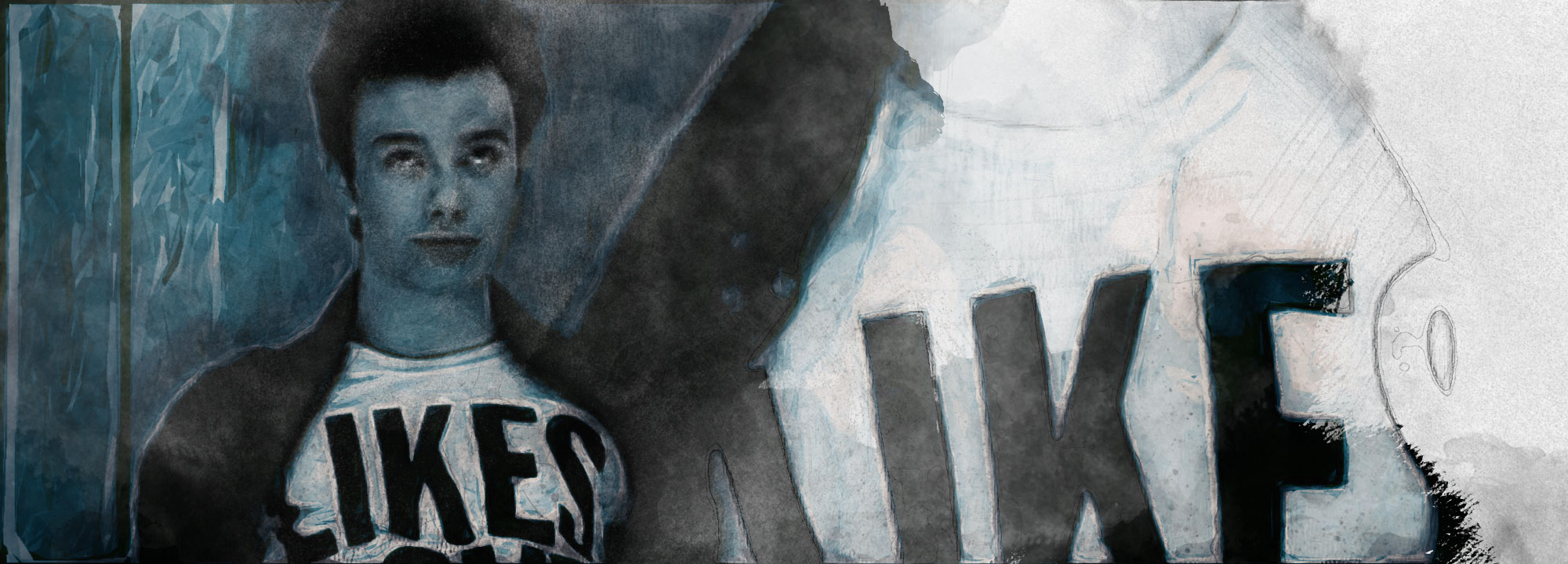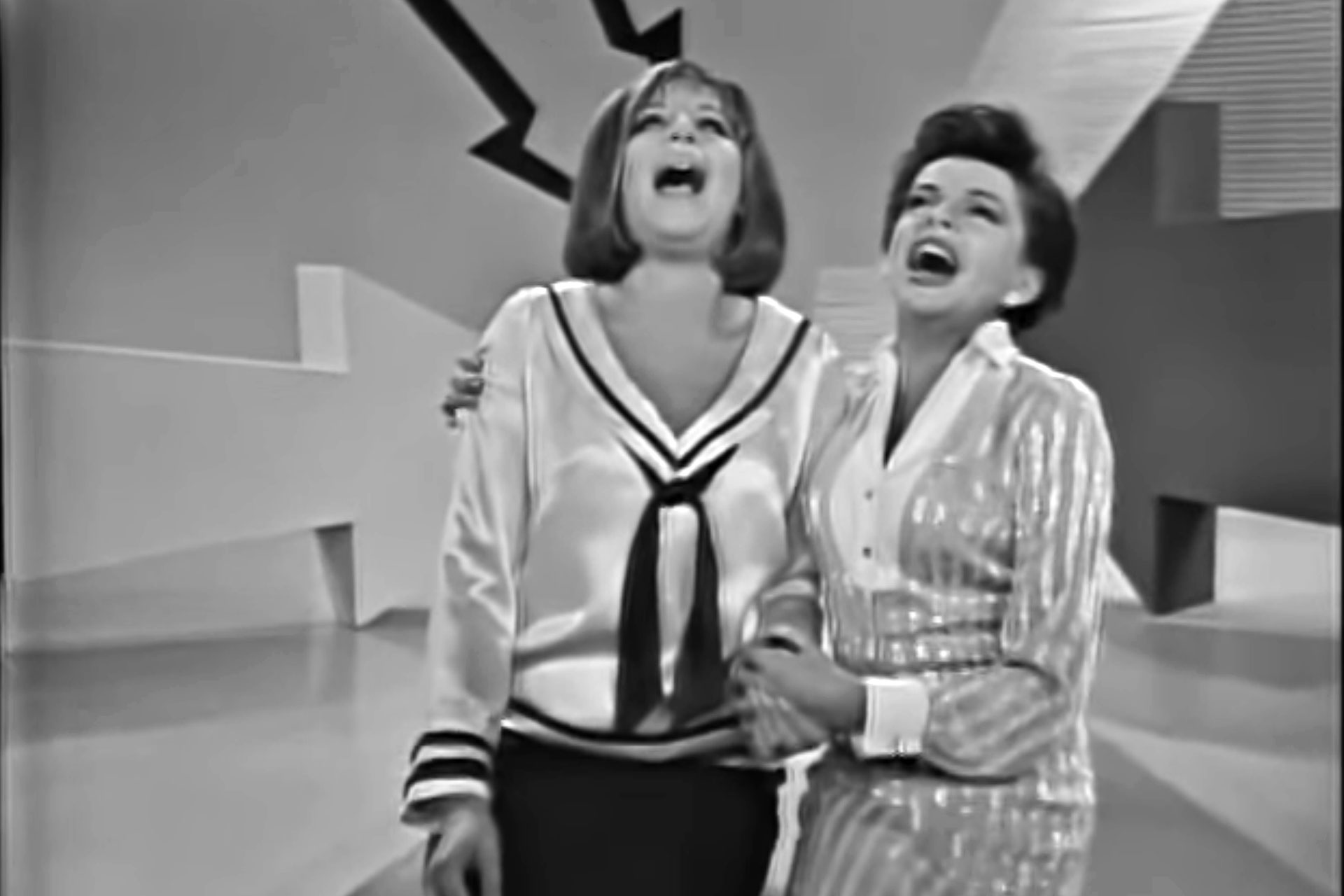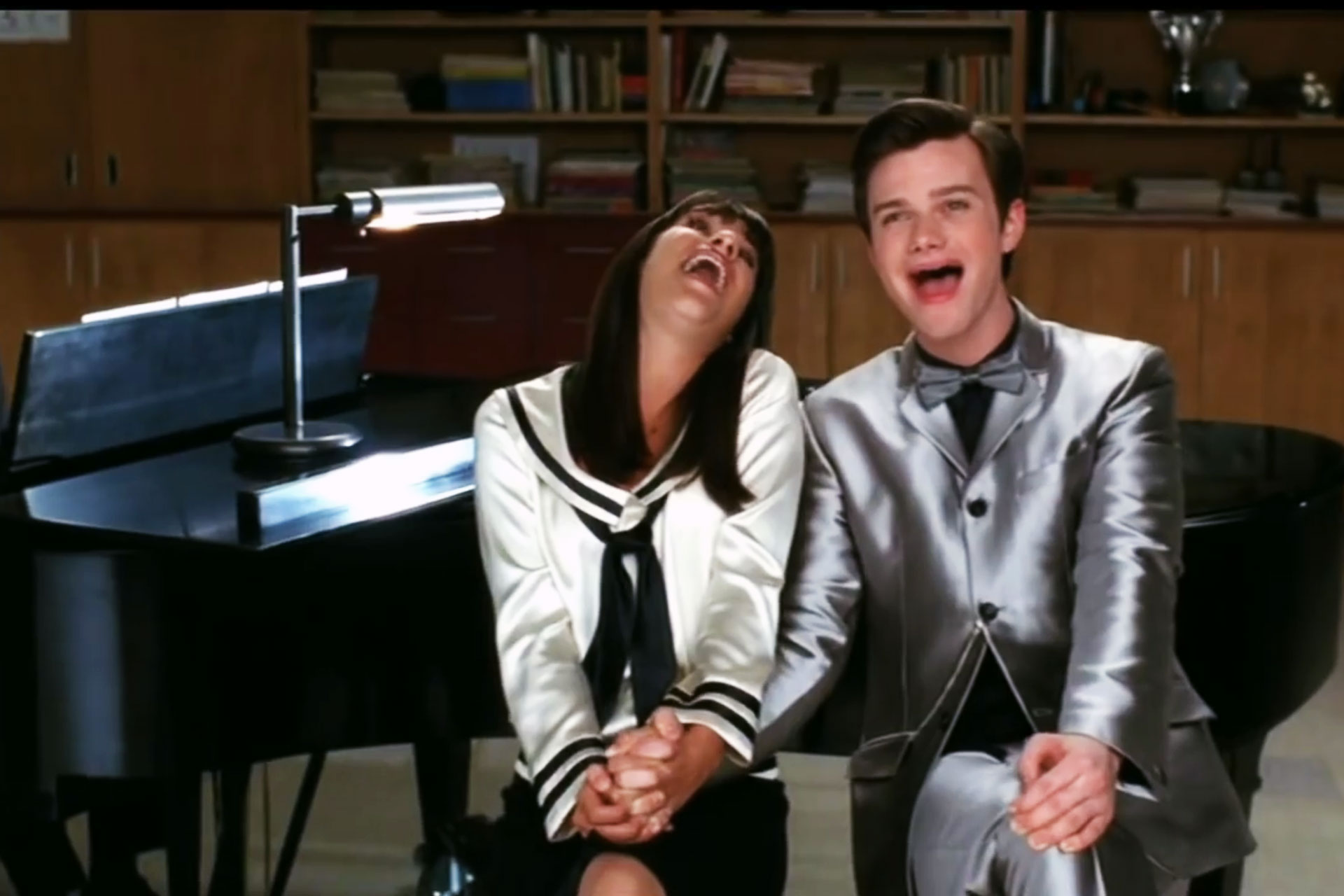How to Leave this Show
Lolachrome’s “You” is about much more than Kurt Hummel from Glee. It’s about movies, magic, queerness, and longing, but mostly it’s a vid about the pain and the ecstasy of being who you are, when you are. But bear with me for a minute while I get us situated: In order to write properly about Chris Colfer’s intriguing face intercut with Golden Age Hollywood movies in a symbolic manner, I must first gripe about my show.
For several years, 2011-2016 more or less, when introducing myself at a fannish meet-up and being asked about my current interests, I answered, “Glee…God help me.” Within broader media fandom, Glee doesn’t exactly have a reputation as a pinnacle of art and good taste. Admitting I watched it conferred no dignity upon me. Plenty of us have been there, falling for some compelling detail of an otherwise frustrating show, and, to their credit, my friends were mostly sympathetic, and listened to me babble about aesthetics and queerness and sound design with great patience. When I first mentioned it on my blog, and tried to explain what on earth had allured me, I described it thus:
It’s hours and hours of headdesking interrupted by fleeting moments of transcendent, culture-defining genius. It is–90% of the time–not a show about the way things are, not realism; it’s a show about the way things feel. It’s loud, technicolour, ecstatic, mortifying, and deeply stupid. It is a show about self-absorption: every little humiliation is epic, and every triumph is also vindication. It’s not a very nice show, mostly. But every once in a while it shoves itself aside, and is surprised to find it was sitting on a kernel of truth.
The truth frequently found itself lodged in the throat of Kurt Hummel, the gay boy named after a porcelain figurine and a Sound of Music character, played with guts and subtlety by Colfer. In 2009, Glee was one of the first major-network shows to give a gay teenager a starring role. Kurt began as a small, effeminate stereotype, and over six years became an icon–not a supporting character, or comic relief or a tragic example, but a full-blown goddamned Campbellian hero with a front page, A-plot romance. When the show got dreadful (and it was always swinging wildly toward dreadful on some axis or other), it was Kurt for whom I stayed. Kurt and his boyfriend, Blaine, individually and as a pair.
Kitschy old Glee, viewed through my Kurt-coloured glasses, is a show about queer identity, restlessness, and nostalgia. Despite the autotuned pop sensibility that critics love to bash, it’s riddled with obscure movie and musical references as well as extended tributes to artists and artworks its teenaged target audience had almost no familiarity with and no investment in–from Judy Garland Christmas specials to recreations of Wham! videos from the eighties. Sometimes these tributes stem from a deeply sincere desire to bring the best of American pop culture history to the attention of the next generation. Other song choices seem purely self-indulgent on showrunner Ryan Murphy’s part, winking at an audience of a dozen people.
Lola’s vid, archly titled “You,” reflects the same ambivalence toward Glee and Ryan Murphy’s masturbatory nostalgia. At first glance, it’s a character study of Kurt that makes thoughtful use of old movie footage to deepen its argument. It’s also a study of Kurt’s own use of vintage texts and personalities to make sense of his position in the world. On a third level, “You” is a grumpy dig at Murphy himself, and the constraints Glee’s sloppy, Prime Time structure places on a character whose narrative potential grew far greater than the imaginations of his writers.
Lola’s song choice is “Sort Of” by Ingrid Michaelson. It’s about a couple in an unequal relationship. The singer is too intense and too invested in a lover who doesn’t reciprocate her feelings. The lyrics, read as a single, coherent arc, are not a perfect, literal match for the vid’s thesis, but rather shift in implication from clip to clip, verse to verse. And though Kurt’s boyfriend has an important role to play, Lola’s primary interest isn’t shipping. Michaelson’s refrain goes, “My love’s too big for you, my love.” Lola’s “you” isn’t Blaine, though, but—well. Kurt is a gay boy in a small town. It doesn’t matter who or what is the object; Kurt loves many things. His love is always already too frightening and too big.
We have to go in there.
Just one other sound sample shows up early on. “We have to go in there.” Lola’s thesis unfolds with those words, spoken by Kurt as he and Rachel, his best friend and best rival, stand outside Tiffany’s on their first trip to Manhattan. Footage from Breakfast at Tiffany’s intercuts with scenes from the two friends’ pilgrimage to the famous store(/story) as well as the Gershwin Theater, the home of the musical Wicked. As they sneak onto the stage, an overlaid film reel effect alerts us to Lola’s intentions: Kurt wants to be inside the story. Furthermore, we as viewers must be aware of the stacking of narratives: Kurt is already inside the story we are watching. The constraints under which Kurt struggles are inflicted not purely by his fellow characters in oppressive, small-town Ohio, but by the producers and writers’ room of a Hollywood studio who don’t always know what to do with him or how to leap past the clichéd Gay Storylines they were raised on.
For Kurt, the allure of Old Hollywood is poignant. He doesn’t fit in his mean little town surrounded by cow pastures; his spirit is too big, his dreams too bright, his sense of romance unsatisfied. And he’s too queer. Small and effeminate at age fifteen, with a soaring countertenor voice perfectly suited to diva songs such as “Defying Gravity” and “As If We Never Said Goodbye,” Kurt belongs anywhere but here. In the glee club, he finds companionship—other kids who care too much, his fellow misfits and anachronisms—but his choir director overlooks him for solo parts and won’t let him sing the girl songs that suit his strengths, and he’s bullied as soon as he leaves the music room.
Kurt has no gay mentors. He has a handful of clichéd and dismal Gay Storylines to pour over. Role models are scarce; he’s all but cut off from the queer history that should be his right. And so he swaps in women’s history, and, abandoned by his own era, turns to the past for solidarity—to the dreamers and lovers of Golden Age cinema. Here’s Holly Golightly, small-town girl in the big city, and plucky farmer-turned-thespian Jane Falbury, and Kathy Selden from Singin’ in the Rain being led onto a Paramount soundstage—being let in—in a movie about movie magic. These are the allies of his imagination: boxed in by heterosexual patriarchy and yearning for freedom and a kindred spirit to share it. In them, and in the divas whose songs he sings, Kurt finds strength and self-definition.
his spirit is too big
his dreams too bright
I owe part of my argument to a set of essays on Glee’s position in American musical history by Allison McCracken. “The Countertenor and the Crooner” had a huge impact on Glee fandom in 2011, and Lola mentions it as inspiration in her vid notes. According to McCracken,
“Defying Gravity” began Glee’s practice of having Kurt reinterpret selections from the gay-fan canon of female diva performances, most of them from Hollywood or Broadway. While these songs are tributes to the singers, as well as an education in the history of gay sensibility, they are also an indicator that the torch is being passed. While the gay boy will surely continue to identify with (and sing along to) female singers, Kurt asserts that he can be his own diva, singing solos in traditionally female vocal ranges; Kurt performs “Le Jazz Hot” from Victor/Victoria because it allows him to “embrace my male and my female sides.”
But Kurt’s relationship with his chosen people is complicated. Judy Garland and Debbie Reynolds aren’t Kurt’s only cinematic soulmates according to Lola; James Dean also shows up in his role as Jim Stark in Rebel without a Cause. Lola uses Jim’s red jacket to draw out the connection between Jim and Kurt. When Jim gives the object to his friend Plato, who holds it tenderly and reverently, he is also offering his legacy to Kurt. Kurt, wearing his copy of the jacket like armour, bears a stunning resemblance to the queer icon. But it’s a bleak moment, too, for Kurt is singing for his sick father, and in the next clip he is a child at his mother’s funeral. Linking the only queer man in Lola’s list of idols, a man who died at age twenty-four, with Kurt’s own experiences with death, emphasizes the loneliness and precariousness of his position. In the last clip of Dean, he’s white as a ghost in his T-shirt, and Plato/Kurt, following in his footsteps and looking hopelessly young, gazes after him longingly.
In the real world, Kurt doesn’t yet have James Dean’s charisma or ability to hold his own in a skirmish. Lola shows footage of his alienation from his peers, his run-ins with the school bully, and the inane, useless reaction of his teacher, over the lyrics, “And if I were stronger, I’d leave this show / And if I were stronger, I’d up and go.” Like a Sondheim character, he feels in his bones that he’s been trapped in the wrong story.

Then, jarringly, Lady Gaga! Dressed as Kurt’s goddess-muse and seated on the throne from her “Born This Way” music video, she heralds a shift in the narrative. In verse three, Blaine, Kurt’s boyfriend, finally makes his appearance. “You’re not alone,” Lady Gaga seems to say. “Look, I will give you a companion.” And here he is, bright-eyed, exuberant, with charisma bursting from him like sunlight, and beaming right at Kurt. But Michaelson sings: “Baby you’ve got the sort of eyes that tell me tales / That your sort of mouth just will not say (the truth impales) / That you don’t need me, but you won’t leave me.”
Blaine is yet another ambiguous presence in Kurt’s life, a source of love and hurt inextricably linked. With the voice and body of a matinee idol, effortlessly, classically masculine, Blaine breezes into the role of leading man in Kurt’s life…and in all the musical auditions in Kurt’s life. Lola intercuts footage of Blaine’s flawless Tony audition with Kurt essaying Romeo and being laughed off the stage. Blaine is gay, just like Kurt, but, in his affect, he’s the right kind of gay. Everyone desires him. He steals spotlights from Kurt without even trying, or wanting to.
Outwardly and inwardly, Kurt grows up, but clues about his enduring relationship with an idealized past lurk in his fantasies. In a lush dream sequence from season four, while he and Blaine are broken up, he is Satine from Moulin Rouge to Blaine’s Christian: one more time, Kurt inserts himself into a movie about a simpler time. By this point, Kurt and Blaine have sung many male/female duets with Kurt taking the female part and Blaine as his dashing hero. This time, the sequence is about Kurt’s melancholy recognition of the unsustainability of those simple roles.
And then there’s his last solo on the show, which Colfer himself chose: “Memory,” from the musical Cats. It’s the ultimate female diva song, sung by a sort of feline Norma Desmond, aging star of Hollywood’s lost golden era. It’s also too high for Colfer’s adult voice; he sounds shrill and thin. He doesn’t fit this song any more than he fits into the mold of the starlets he idolized. And he sings it while auditioning for Peter Pan. As an adult, Kurt is in the process of learning to change the shape and purpose of his nostalgia. In his musical choices, his tumultuous but enduring relationship with his boyfriend, even his wardrobe, which he takes very seriously as a reflection of his inner self, he takes what’s good about the past and restyles it for his own use.
“So what are you into these days?” “Glee, God help me,” says Kurt Hummel. Stuck in a genre that doesn’t serve him, Kurt finds meaning and pleasure in his own meticulously curated set of stories: he’s a little bit fannish, really.
making everything better in your own version
Leaving the show” is what we, as fan creators and consumers of fic, art, vids, etc., make our characters do all the time. Fan work, at its best, is about illuminating facets of beloved characters that the canon keeps in shadow, or exploring which parts of them stay constant even when the narrative or setting changes. It’s also about fleeing from frustrating storylines and making everything better in your own version. Like Kurt, we Mary Sue ourselves into other times and places, and interpret our lives through beloved texts.
“You” is an important example of a vidding style not common in Glee fandom, and maybe increasingly rare in vidding at large, as new generations of vidders grow more dispersed and self-taught: the meta vid, which develops a single critical argument via carefully chosen symbolism. Lola’s use of multiple sources to deepen a study of a single character is a technique I want to see more of. Our ability to draw connections between eras, narrative genres, and diverse and seemingly unrelated character types widens our reach and enriches us as storytellers.




